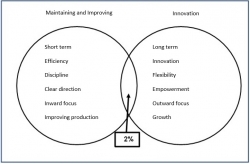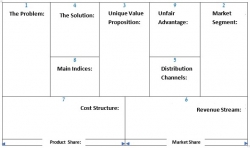I am sometimes asked if I provide organizational consultation regarding management conflicts, and I answer that usually the source of the problem lies in the missing parameters in the allocation of authority, within management, and from there, the situation spreads to the entire organization.
Accountability
The source of the problem lies in the definition of responsibility, and in that I don't mean the responsibility as to whom I give instructions (who am I responsible for). Rather, it is responsibility for what I decide, or accountability.
After we define the responsibilities as described here of all members of management and holders of position who report to the CEO, we will get a clearer picture of reality, and we may be able to distinguish where there might be overlap in accountability, or empty areas that nobody takes responsibility for.
Objectives, measures and authority
The next step is to define the objectives of each person for whom we have defined their responsibility. Every objective will be defined in quantitative measures to enable us to monitor our progress towards realizing these objectives.
Let us define these objectives using the acronym SMART, which stands for: Specific, Measurable, Achievable, Relevant, Time-constrained.
To attain our objectives, we will have to define each manager's authority. In this stage, we should again ensure that people don't share authorities in the same part of the organization, as this will surely be a source of internal conflict among management.
The full picture
Now we have the full picture, and I suggest that full definition of job titles be constructed like this:
- What is the job, in one phrase, eg., CEO, operations manager, etc.?
- Subordination: to whom do they report?
- Responsibility: As we mentioned above, accountability.
- Objectives as listed above.
- What are the authorizations required to maintain objectives?
- Definition of measures – only quantitative, as mentioned above.
Recommended work practices
In the first stage, every manager should define his job title as above. In the second stage, we should hold a management discussion on definitions for the positions (of management and position holders who report only to the CEO).
At this stage, all types of problems will arise and the source for most of the internal conflicts, or failures, may well stem from grey areas where nobody takes responsibility.
This stage should certainly be guided by an external individual who can lead the discussion to a safe place and who knows how to reach clear definitions without perpetuation of the problems and the grey areas.
From my own experience, these discussions are not simple, but they are necessary, and as soon as we summarize them, the road is paved towards progress.
In the next stages, each manager/position holder should perform the same process with their subordinates. This is also the place where the CEO can take leadership and undertake the responsibilities appropriate to their position.












 My First Book: Manage! Best Value Practices for Effective Management
My First Book: Manage! Best Value Practices for Effective Management